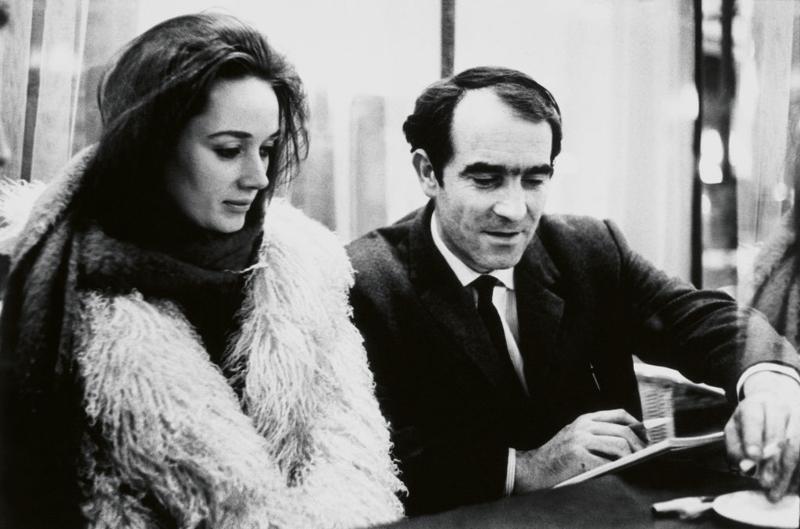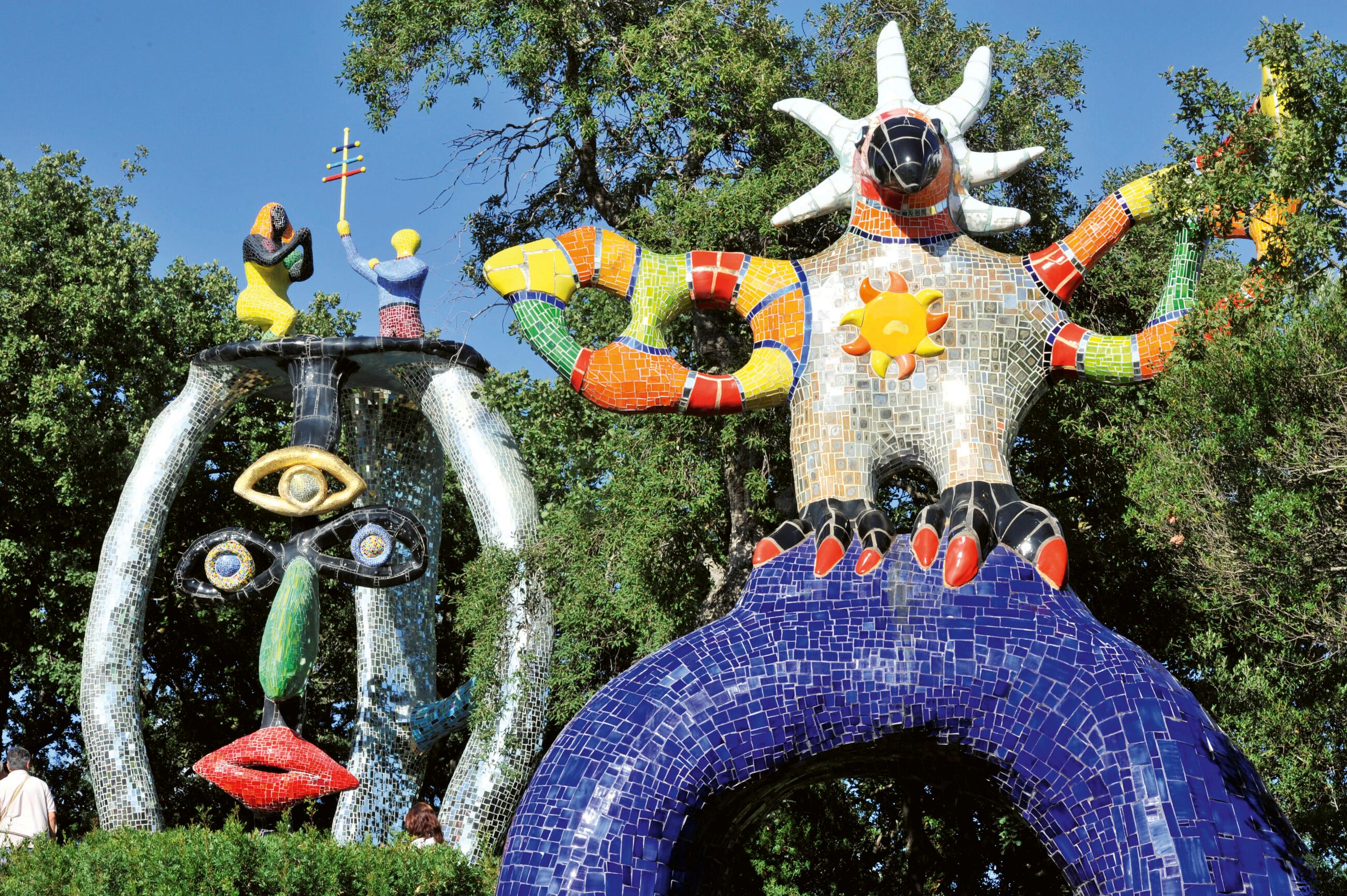Letters
Hearts in Motion
Niki de Saint Phalle writes to Jean Tinguely

Letter from Niki de Saint Phalle to Jean Tinguely, ca. 1982
In 1982, the French American artist Niki de Saint Phalle sent her husband, the Swiss sculptor Jean Tinguely, a birthday letter unlike any conventional card. Hand-illustrated and visually exuberant, it presents a cascade of drawings as eccentric as they are endearing. At the center is a portrait of Tinguely, his balding head crowned with light bulbs above the brightly colored base of his neck. Saint Phalle’s inscription, “Foulard Jean avec des petits pois,” refers to a black-and-white polka-dotted scarf he often wore. Underneath, she wrote “Lampe Jean je vais la faire!”—playfully indicating that she would turn the drawing into a lamp (though she never did).
Saint Phalle met Tinguely in Paris in 1956. She was twenty-five, married to the writer Harry Mathews and just beginning to define herself as an artist. Tinguely, six years older, was married to fellow artist Eva Aeppli and constructing his early kinetic sculptures from scavenged materials. One of these works, Relief méta-mécanique sonore II (1955), immediately captivated Saint Phalle, and Mathews purchased it. Saint Phalle and Tinguely soon formed a bond that evolved into a creative exchange. Saint Phalle brought Tinguely her obsessions, among them Gaudí and the outsider artist Ferdinand “Facteur” Cheval. Tinguely introduced her to Dada, Duchamp and a vision of modern art that was mechanical, ephemeral and intentionally disruptive.
Over the course of three decades of romance and collaboration, the couple exchanged countless messages, even when separated by continents. “It was like a game of ping pong between us,” Saint Phalle later said. “We passed the ball back and forth.” Both were disciplined writers who, when together, often spent hours each morning composing letters to people around the world, regularly inserting themselves into each other’s messages. When fax machines came into use, they embraced the technology, filling roll after roll of paper with their correspondence.

Saint Phalle and Tinguely in Paris, ca. 1966
This letter’s visual style displays the graphic spontaneity that runs throughout Saint Phalle’s artist’s books, in which handwriting, symbols and imagery fuse into unified expressions of thought. In the early days of their relationship, Saint Phalle recalled, “I told [Jean] my dreams exceeded my technical abilities,” to which Tinguely replied, “Niki, the dream is everything, technique is nothing—you can learn that.”
By the 1970s and ’80s, the private discourse of their letters occasionally surfaced in their public work. One of their most iconic joint projects was the Fontaine Stravinsky, completed in 1983 beside the Centre Pompidou in Paris. There, Saint Phalle’s vibrant mythic forms seem to dance alongside Tinguely’s kinetic structures, each element animated by water and movement. While their public collaborations required constant negotiation, their letters provided them a space for unfiltered expression. Saint Phalle’s voice alternated between manifesto-like conviction and vulnerability, sometimes within the same letter. Tinguely’s surviving replies tended to be brief and exclamatory, conveying flashes of passion, mischief and provocation.

Niki de Saint Phalle, Il Giardino dei Tarocchi (The Tarot Garden), 1978–1998. Pescia Fiorentina, Capalbio, Italy, Provincia de Grossetto
By 1982, Saint Phalle was living in Italy, immersed in the creation of her life’s most ambitious project, a monumental fourteen-acre sculpture garden in Tuscany known as Il Giardino dei Tarocchi (The Tarot Garden), with sculptures based on the Major Arcana of the tarot deck. By this time, Tinguely was based in Switzerland, and he often contributed mechanical elements to her architectural visions. Letters from this period are both affectionate and practical, filled with updates, encouragement and glimpses of daily life.
This birthday greeting arrived midway through the construction of Il Giardino dei Tarocchi and shortly before the completion of the Fontaine Stravinsky, at a moment when both artists were at the height of their independent careers yet still deeply entwined. Their relationship may have defied conventional definition, but their correspondence provided a consistent base of trust, curiosity and momentum. The two wrote not only to stay in touch but to stay in motion—passing ideas back and forth until something ignited.
—Alexandra Vargo
–
“Niki de Saint Phalle & Jean Tinguely: Myths & Machines” remains on view at Hauser & Wirth Somerset through 1 February 2026.
Watch a new Ursula film, Sacred Monsters: Niki de Saint Phalle & Jean Tinguely
